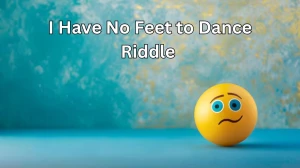I Sometimes Run But Cannot Walk. What Am I? Riddle
by
Updated Jul 02, 2024

New day, new riddle. Are you ready to take up our riddle for today? Here is the riddle:
I Sometimes Run But Cannot Walk. What Am I?
This riddle plays on the different ways things can move. Something can run but not walk? What could that be? Think about things that might move quickly but don't have legs to walk with in the traditional sense. Are you ready to put your thinking cap on and solve this riddle?
Analyzing The Riddle
This riddle challenges us to think about different types of movement. Here's a breakdown to analyze the answer:
Surface Level
The riddle describes something that:
- Can run.
- Cannot walk.
Key Points
- The key difference lies in the types of movement - running and walking. Walking typically involves using legs, while running can happen without them.
Can you think of something that can move quickly but doesn't have legs to walk with? Consider both abstract concepts and physical objects.
Hints To Decode The Answer
Here are some hints to help you decode the answer to the riddle "I Sometimes Run But Cannot Walk":
Hint 1: Part of the Body
The answer to this riddle is something that's part of your body.
Hint 2
The thing in the riddle isn't used for getting from one place to another in the traditional sense (like legs for walking).
Hint 3: It Can Get "Runny"
The answer to the riddle can sometimes be described as "running" but not in the way a person or animal runs.
I Sometimes Run But Cannot Walk. What Am I? Riddle - Answer
The answer to the riddle "I Sometimes Run But Cannot Walk" is your Nose. Here's a detailed explanation:
The Paradox of Movement:
The riddle presents a seemingly contradictory situation. Something can run but not walk, which challenges our usual understanding of these terms.
Understanding the Answer: Nose
The key to solving this riddle lies in the figurative use of the word "run" and the different ways things can move.
- Literal Running: Running typically involves using legs for locomotion.
- Figurative Running: In this case, "running" refers to a discharge or flow from the nose.
Why a Nose Fits:
- Runny Nose: A common experience is having a "runny nose," where mucus flows from the nostrils. This "running" doesn't involve walking.
- No Legs for Walking: A nose, of course, doesn't have legs and cannot walk in the traditional sense.

Conclusion
So, did you figure out the answer to the riddle? If you guessed a Nose, then you're right!
This riddle plays on a fun twist of language. Our noses, despite not having legs, can definitely experience a "runny" state where a discharge flows freely.
The key takeaway here is that movement can be interpreted in different ways. "Running" doesn't always have to involve legs, and sometimes the answer to a riddle lies in a clever use of figurative language.




